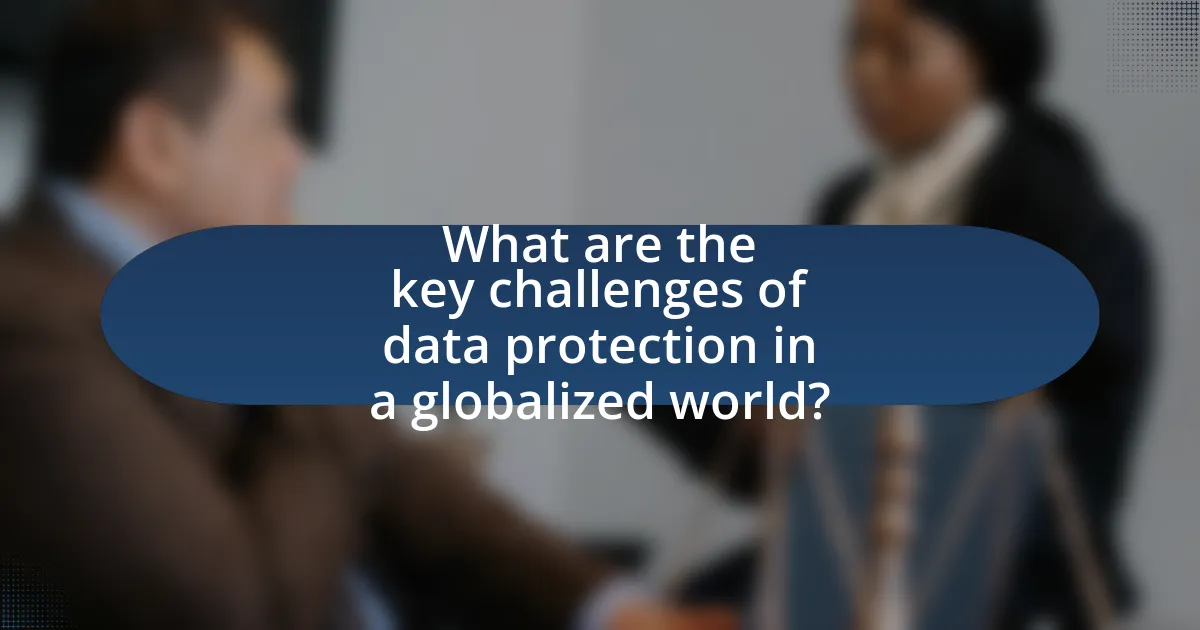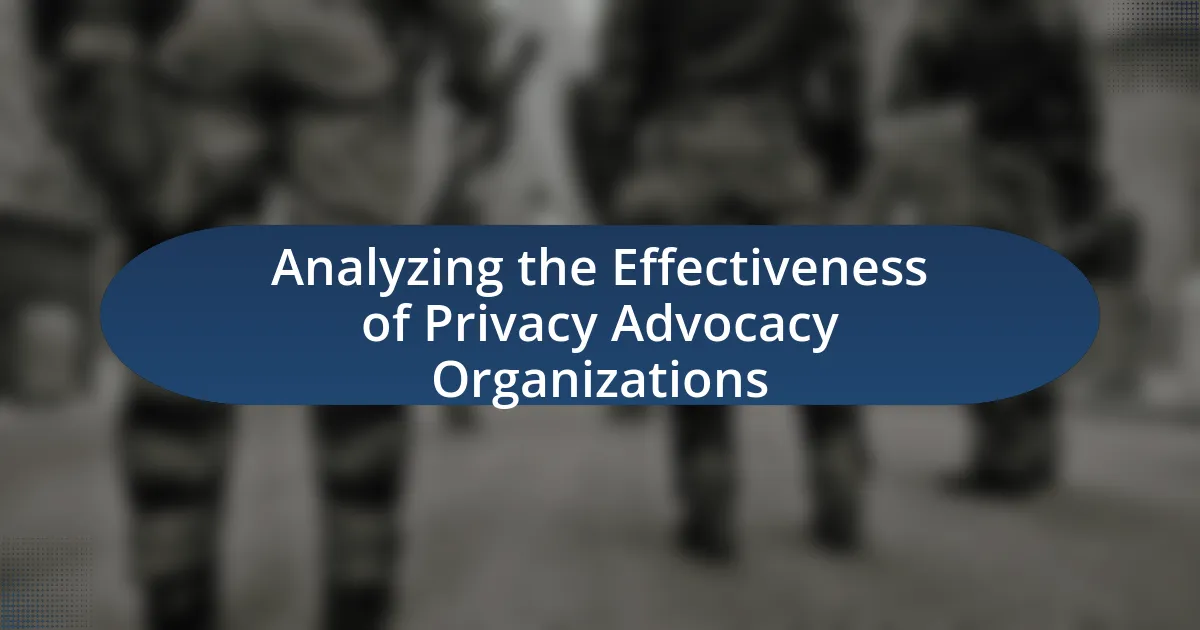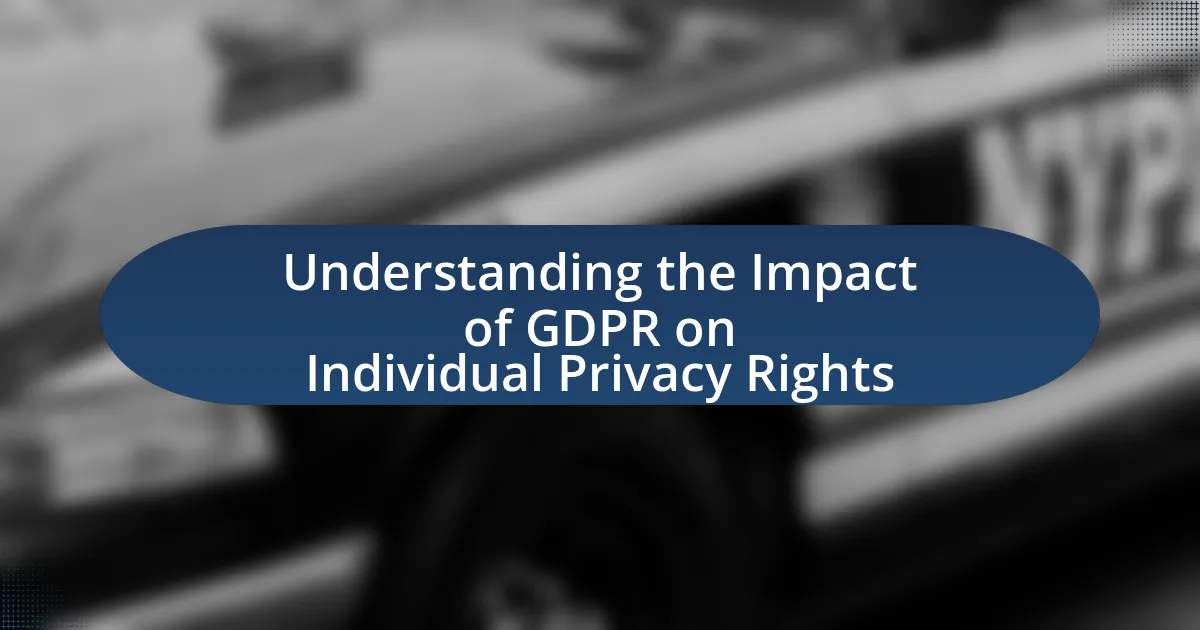The article examines the challenges of data protection in a globalized world, highlighting key issues such as differing national regulations, cross-border data flows, and the increasing threat of cyberattacks. It discusses how globalization complicates compliance for multinational companies due to varying data protection laws, exemplified by the stringent General Data Protection Regulation (GDPR) in the European Union compared to more lenient regulations elsewhere. The article also addresses the risks associated with data breaches, the importance of consumer trust, and strategies organizations can implement to enhance data security and ensure compliance with international regulations. Additionally, it emphasizes the role of employee training and regular audits in maintaining robust data protection standards.

What are the key challenges of data protection in a globalized world?
The key challenges of data protection in a globalized world include differing national regulations, cross-border data flows, and the rise of cyber threats. National regulations vary significantly, as seen with the European Union’s General Data Protection Regulation (GDPR) contrasting with less stringent laws in other regions, complicating compliance for multinational companies. Cross-border data flows create difficulties in ensuring consistent protection standards, as data may be subject to the laws of multiple jurisdictions. Additionally, the increasing sophistication of cyber threats, including data breaches and ransomware attacks, poses significant risks to data security, as evidenced by the 2021 ransomware attack on Colonial Pipeline, which highlighted vulnerabilities in critical infrastructure.
How does globalization impact data protection laws?
Globalization significantly impacts data protection laws by creating a complex landscape where differing national regulations must be navigated. As businesses operate across borders, they encounter varying standards for data privacy, leading to challenges in compliance and enforcement. For instance, the European Union’s General Data Protection Regulation (GDPR) sets stringent requirements for data handling, which can conflict with less rigorous laws in other countries. This disparity necessitates that multinational companies adopt more robust data protection measures to ensure compliance with the strictest regulations, thereby influencing global data governance practices.
What are the differences in data protection regulations across countries?
Data protection regulations vary significantly across countries, primarily influenced by cultural, legal, and economic factors. For instance, the European Union’s General Data Protection Regulation (GDPR) imposes strict rules on data processing and grants individuals extensive rights over their personal data, including the right to access and delete information. In contrast, the United States employs a sectoral approach, with laws like the Health Insurance Portability and Accountability Act (HIPAA) for health data and the California Consumer Privacy Act (CCPA) for consumer data, leading to a patchwork of regulations rather than a unified framework. Additionally, countries like China enforce stringent data localization requirements and government access to data, reflecting different priorities regarding state control and privacy. These differences highlight the challenges of harmonizing data protection in a globalized world, as businesses must navigate varying compliance landscapes.
How do international agreements influence data protection standards?
International agreements significantly influence data protection standards by establishing common frameworks and guidelines that countries adopt to enhance privacy and security. For instance, the General Data Protection Regulation (GDPR) enacted by the European Union sets a high standard for data protection that many countries seek to emulate or align with to facilitate trade and cooperation. Additionally, agreements like the Privacy Shield framework between the EU and the U.S. aim to ensure that data transferred across borders is adequately protected, thereby influencing national laws and practices. These agreements create a ripple effect, prompting nations to harmonize their data protection laws to meet international expectations and foster trust in cross-border data flows.
What are the risks associated with data breaches in a global context?
Data breaches in a global context pose significant risks, including financial loss, reputational damage, and legal consequences. Financially, organizations can incur costs exceeding millions due to remediation efforts, regulatory fines, and loss of business; for instance, the average cost of a data breach in 2021 was $4.24 million according to IBM’s Cost of a Data Breach Report. Reputationally, companies face diminished trust from customers and stakeholders, which can lead to long-term revenue decline. Legally, organizations may face lawsuits and penalties for failing to protect sensitive data, as seen in the European Union’s General Data Protection Regulation, which imposes fines up to 4% of annual global revenue for non-compliance. These risks are exacerbated in a globalized world where data flows across borders, complicating compliance with varying international regulations and increasing vulnerability to cyberattacks.
How do cyber threats vary across different regions?
Cyber threats vary significantly across different regions due to factors such as economic development, regulatory environments, and technological infrastructure. For instance, regions with advanced technological infrastructures, like North America and Western Europe, often face sophisticated threats such as ransomware and state-sponsored attacks, as evidenced by the high-profile incidents involving companies like Colonial Pipeline and SolarWinds. In contrast, developing regions may experience a higher prevalence of basic cybercrimes, such as phishing and identity theft, driven by lower cybersecurity awareness and resources. According to the 2021 Cyberthreats Report by Cybersecurity Ventures, Asia-Pacific has seen a 300% increase in cybercrime incidents, highlighting the growing threat landscape in emerging markets. This disparity in cyber threats underscores the need for tailored cybersecurity strategies that consider regional characteristics and vulnerabilities.
What are the consequences of data breaches for organizations operating globally?
Data breaches for organizations operating globally result in significant financial losses, reputational damage, and legal consequences. Financially, the average cost of a data breach in 2023 is estimated at $4.45 million, according to the IBM Cost of a Data Breach Report. Reputationally, organizations may experience a loss of customer trust, leading to decreased sales and long-term brand damage. Legally, companies face regulatory penalties, especially under stringent laws like the General Data Protection Regulation (GDPR), which can impose fines up to 4% of annual global revenue. These consequences highlight the critical need for robust data protection strategies in a globalized environment.
Why is consumer trust crucial for data protection?
Consumer trust is crucial for data protection because it directly influences individuals’ willingness to share personal information with organizations. When consumers trust that their data will be handled securely and ethically, they are more likely to engage with services that require personal data, thereby enabling businesses to operate effectively. According to a 2021 survey by the International Association of Privacy Professionals, 79% of consumers expressed that they would stop using a service if they felt their data was not adequately protected. This statistic underscores the importance of trust in fostering a secure data-sharing environment, which is essential for both consumer confidence and organizational success in a globalized digital landscape.
How do data protection practices affect consumer confidence?
Data protection practices significantly enhance consumer confidence by assuring individuals that their personal information is secure and handled responsibly. When companies implement robust data protection measures, such as encryption and compliance with regulations like the General Data Protection Regulation (GDPR), consumers are more likely to trust these organizations with their data. A study by the Ponemon Institute found that 70% of consumers are more likely to engage with a company that demonstrates strong data protection practices. This correlation indicates that effective data protection not only mitigates risks of data breaches but also fosters a sense of safety and trust among consumers, ultimately influencing their purchasing decisions and brand loyalty.
What role does transparency play in building trust with consumers?
Transparency is crucial in building trust with consumers as it fosters open communication and accountability. When companies disclose information about their data practices, such as how consumer data is collected, used, and protected, they demonstrate a commitment to ethical standards. Research by the Edelman Trust Barometer indicates that 81% of consumers need to trust a brand to buy from them, highlighting the direct correlation between transparency and consumer trust. Furthermore, transparency can mitigate concerns about data privacy, as consumers are more likely to engage with brands that are clear about their data handling practices.
How can organizations navigate the complexities of data protection?
Organizations can navigate the complexities of data protection by implementing comprehensive data governance frameworks that align with legal requirements and best practices. These frameworks should include regular risk assessments, employee training on data handling, and the establishment of clear data management policies. For instance, the General Data Protection Regulation (GDPR) mandates that organizations conduct Data Protection Impact Assessments (DPIAs) to identify and mitigate risks associated with personal data processing. Additionally, organizations should leverage technology solutions such as encryption and access controls to safeguard sensitive information. According to a 2021 report by the International Association of Privacy Professionals (IAPP), organizations that adopt a proactive approach to data protection not only comply with regulations but also enhance customer trust and brand reputation.
What strategies can be implemented to enhance data security?
Implementing multi-factor authentication (MFA) is a crucial strategy to enhance data security. MFA requires users to provide two or more verification factors to gain access to a resource, significantly reducing the risk of unauthorized access. According to a report by Microsoft, MFA can block over 99.9% of account compromise attacks, demonstrating its effectiveness in protecting sensitive data. Additionally, regular software updates and patch management are essential, as they address vulnerabilities that could be exploited by cybercriminals. The Cybersecurity and Infrastructure Security Agency (CISA) emphasizes that timely updates can prevent many security breaches. Lastly, employee training on data security best practices is vital, as human error is a leading cause of data breaches; a study by IBM found that 95% of cybersecurity incidents are due to human mistakes.
How can organizations ensure compliance with varying international regulations?
Organizations can ensure compliance with varying international regulations by implementing a comprehensive compliance management system that includes regular audits, employee training, and legal consultations. This system should be tailored to the specific regulations of each jurisdiction in which the organization operates, such as the General Data Protection Regulation (GDPR) in the European Union and the California Consumer Privacy Act (CCPA) in the United States. Regular audits help identify gaps in compliance, while employee training ensures that staff are aware of their responsibilities under different regulations. Legal consultations provide expert guidance on navigating complex regulatory landscapes, thereby reducing the risk of non-compliance and potential penalties.
What technologies can be leveraged to improve data protection?
Technologies that can be leveraged to improve data protection include encryption, access controls, and data loss prevention (DLP) solutions. Encryption secures data by converting it into a coded format that can only be accessed with a decryption key, thereby protecting sensitive information from unauthorized access. Access controls restrict who can view or manipulate data, ensuring that only authorized personnel have access to critical information. Data loss prevention solutions monitor and control data transfers, preventing unauthorized sharing or leakage of sensitive data. These technologies collectively enhance data security by safeguarding against breaches and ensuring compliance with regulations.
What best practices should organizations adopt for effective data protection?
Organizations should adopt a multi-layered approach to data protection that includes encryption, access controls, regular audits, and employee training. Implementing encryption safeguards sensitive data both at rest and in transit, making it unreadable to unauthorized users. Access controls ensure that only authorized personnel can access specific data, reducing the risk of internal breaches. Regular audits help identify vulnerabilities and ensure compliance with data protection regulations, such as GDPR, which mandates strict data handling practices. Employee training is crucial, as human error is a leading cause of data breaches; educating staff on security protocols can significantly mitigate risks. According to a 2020 report by IBM, organizations that implement these best practices can reduce the average cost of a data breach by approximately $1.5 million.
How can employee training contribute to data security?
Employee training significantly enhances data security by equipping staff with the knowledge and skills necessary to recognize and respond to security threats. Trained employees are more likely to identify phishing attempts, adhere to data protection policies, and utilize secure practices when handling sensitive information. According to a study by the Ponemon Institute, organizations with comprehensive security awareness training programs can reduce the risk of data breaches by up to 70%. This statistic underscores the importance of ongoing training in fostering a security-conscious culture within organizations, ultimately leading to improved data protection in a globalized environment.
What role does regular auditing play in maintaining data protection standards?
Regular auditing is essential for maintaining data protection standards as it systematically evaluates compliance with established policies and regulations. This process identifies vulnerabilities, ensures adherence to legal requirements, and promotes accountability within organizations. For instance, the General Data Protection Regulation (GDPR) mandates regular audits to verify that personal data is processed lawfully and securely, thereby reducing the risk of data breaches. Furthermore, a study by the Ponemon Institute found that organizations conducting regular audits experience 30% fewer data breaches compared to those that do not, highlighting the effectiveness of auditing in enhancing data protection.





